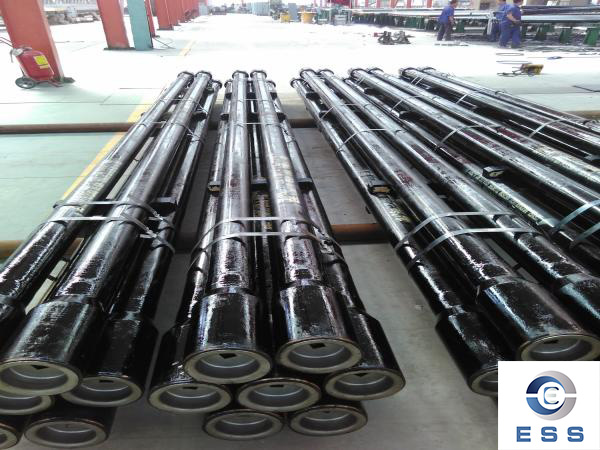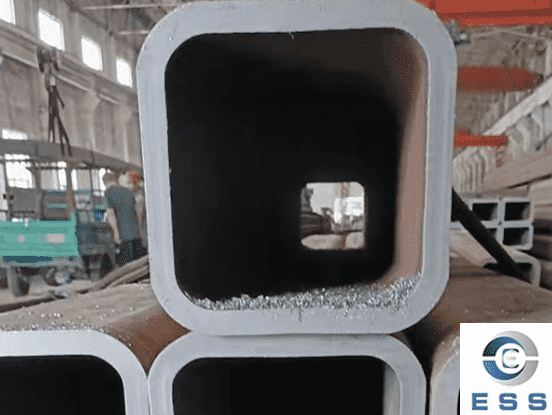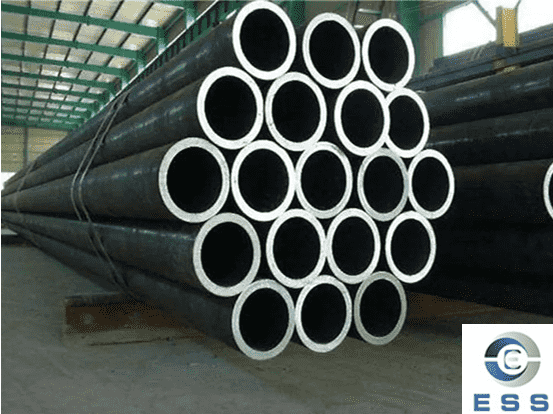Steel grade and classification method of drill pipe

Drill pipe definition
Drill pipe is a steel pipe with a thread at the end, used to connect the surface equipment of the drilling rig to the drilling and grinding equipment or bottom hole device at the bottom of the drilling well. Tools commonly used in oil, natural gas and geological exploration projects are the key materials for connecting drill bits and drilling tools. Generally, seamless pipesare used. Drill pipes With different drilling depths and complexities, drill pipes of different materials and steel grades need to be used to meet drilling requirements.
Classification method of drill pipe steel grades
The steel grade classification of drill pipes mainly adopts API specifications (American Petroleum Institute) standards. API specifications stipulate the size, hardness, material composition and other standards of drill pipe to facilitate the drilling team to select appropriate drill pipe in different geological environments.
API standards divide drill pipe into four steel grades, namely D, E, X, and G. Among them, D-grade steel has lower strength and is mainly used for shallower drilling work; E-grade steel is more durable than D-grade and is suitable for slightly deeper ocean and land drilling; X-grade steel can withstand higher pressure and friction force, suitable for deep water or ultra-deep water drilling; G-grade steel, also known as high-strength steel, can withstand greater tension and pressure and is suitable for drilling in complex geological environments.
Differences between steel grades
1. Grade D steel
Grade D steel is lower in strength and is often used for shallower drilling jobs. It is made of ordinary carbon steel as the main component and can be applied to most geological environments.
2. E-grade steel
Grade E steel is more durable than Grade D and can withstand deeper well depths. Its main component is low alloy steel containing manganese. Due to its high manganese content, its manufacturing cost is relatively high.
3. X-grade steel
Grade X steel can withstand higher pressure and friction and is suitable for deepwater or ultra-deepwater drilling. Its main component is alloy steel containing nickel, chromium, and molybdenum, which has higher strength and corrosion resistance.
4. G grade steel
G-grade steel, also known as high-strength steel, can withstand greater tension and pressure and is suitable for drilling in complex geological environments. Its main component is alloy steel containing chromium, molybdenum and cobalt, which has higher strength and corrosion resistance.
Steel grade classification of drill pipe
The steel grades of commonly used drill pipes can be divided into the following five types:
1. E75 steel grade: It is a relatively common steel grade for drill pipes. It is mainly composed of carbon, manganese, silicon, phosphorus, sulfur, chromium, molybdenum and other elements. It has high strength and toughness.
2. X95 steel grade: It is a high-strength drill pipe steel grade, mainly composed of chromium, molybdenum, titanium and other elements. It has extremely high wear resistance and corrosion resistance, and is suitable for deep and difficult drilling operations.
3. G105 steel grade: It is a drill pipe steel grade with good wear resistance. It is mainly composed of chromium, molybdenum, nickel and other elements. It has high strength and toughness and is suitable for borehole wall drilling in deep and ultra-deep wells. mechanical.
4. S135 steel grade: It is a high-strength, high-toughness, high-wear-resistant drill pipe steel grade. It is mainly composed of carbon, molybdenum, chromium and other elements. It can adapt to extreme underground environments and can meet the needs of ultra-deep and high-strength applications. well requirements.
5. V150 steel grade: It is a new type of steel grade composed of vanadium, phosphorus, sulfur and other elements. It has high strength, high rigidity and high wear resistance, and is widely used in new and difficult drilling fields.
How to choose the appropriate drill pipe steel grade
When selecting drill pipe steel grade, consider the following points:
1. Well depth and complexity
Select the appropriate drill pipe steel grade according to factors such as drilling depth, wellbore size, inclination angle, and formation status to meet the requirements of drilling construction.
2. Underground environment
Select drill pipe materials that can adapt to the underground environment, including the effects of ambient temperature, pressure, corrosive agents, etc.
3. Cost factors
The performance of drill pipe steel grade is directly related to the price. Select the appropriate steel grade to reduce the cost as much as possible while ensuring safety and operating efficiency.
Summarize
The steel grade of drill pipe is one of the key factors that affects drilling operations. Each steel grade has its own characteristics. The steel grade classification of drill pipe is very critical. Choosing the appropriate steel grade is of great significance to drilling operations. When selecting, it is necessary to fully consider factors such as the safety, efficiency, and economy of drilling operations. Through reasonable selection of drill pipe steel grades, the effectiveness and efficiency of drilling operations can be improved, and the risk of accidents can be reduced.













 Eastern Steel Manufacturing Co.,Ltd not only improve product production and sales services, but also provide additional value-added services. As long as you need, we can complete your specific needs together.
Eastern Steel Manufacturing Co.,Ltd not only improve product production and sales services, but also provide additional value-added services. As long as you need, we can complete your specific needs together.










